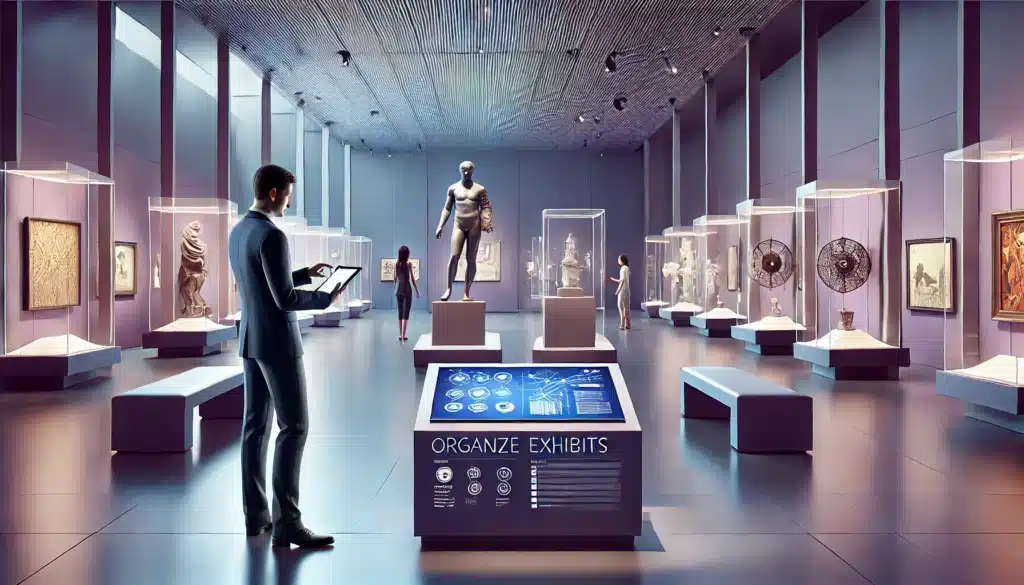KPIs and performance indicators for museums: which ones to choose and why
Effective management of a museum requires constant attention to the cultural performance and resource optimization. In a sector facing challenges related to sustainability, inclusiveness and digitization, the performance measurement becomes critical to assessing success and identifying areas for improvement. In this article, we will explore which performance indicators for museums are the most effective, how best to use them, and why they are essential for the growth of museums, both large and small.
What are performance indicators for museums?
The performance indicators for museums are metrics used to evaluate a museum’s success in various areas, such as attendance, visitor experience, and operational efficiency. These KPIs (Key Performance Indicators) help measure not only economic and financial aspects, but also the quality of thecultural experience offered, which is often the beating heart of any museum.
Without precise measurement, it is difficult to determine which aspects need to be improved to meet visitors’ expectations and to increase the overall value of the museum.
The most relevant indicators for cultural performance
The cultural performance of a museum is one of the most complex aspects to measure because it is not just about numbers or statistics. The visitor experience is a key aspect. Some of the most useful indicators in this context are:
- Average visit time.: indicative of the interest aroused by the exhibitions and the most visited areas.
- Visitor satisfaction.: Collecting feedback via surveys through apps such as amuseapp helps to understand how visitors perceive the cultural experience offered by the museum.
Using these metrics, museums can monitor the effectiveness of educational programs, exhibitions, and special initiatives, making the cultural performance an essential component of their strategy.
The importance of data analysis in choosing KPIs for museums
In today’s environment, where resources are limited and competition is growing, data analysis is crucial to the success of any cultural institution. Data analysis allows museums to choose relevant performance indicators and tailor them to their needs. For example,visitor flow analysis can suggest changes to exhibitions or opening hours, while data on ticket-buying behavior can optimize pricing strategies.
The integration of innovative digital solutions enables accurate and real-time data collection. With amuseapp, for example, museums can collect feedback directly from visitors and obtain detailed reports on their experience, continually improving the quality of their services.

KPIs for large and small museums: what differences?
The size of the museum influence the choice of KPIs. A large museum will need complex indicators that consider aspects such as operational efficiency, personnel management, and collaboration with other institutions. On the other hand, the small museums could focus more on KPIs related to the direct visitor experience, such as involvement in educational activities or the number of new visitors.
Practical examples of KPIs for museums of different sizes:
Large museums. For a large museum, a key KPI is the visitor satisfaction rate, which reflects the overall audience experience and can be measured through solutions such as amuseapp. Another useful indicator could be the cost per visitor, which helps to assess operational efficiency. In addition, one can consider the percentage of visitors who – as a result of the visit – participate in special events (such as lectures or temporary exhibitions), to measure the cultural attractiveness and impact of the proposed initiatives.
Medium and small museums. For smaller museums, the visitor satisfaction rate remains the main KPI, easily monitored through solutions that require no initial investment such as amuseapp. This indicator is essential for assessing audience engagement and appreciation. Other simple but effective KPIs can include the number of annual visitors – useful for measuring the museum’s growth over time – and the average length of stay – to gauge interest and engagement with exhibitions.
In conclusion: choosing the right KPIs for a successful museum
The selection of performance indicators for museums depends on the specifics of each museum, its mission, and its resources. However, regardless of size, a museum that wishes to improve its cultural performance and optimize its management must focus on metrics that measure visitor interaction and quality of experience.
With the use of the right KPIs, museums can not only improve their services, but also adopt a data-driven approach that enables them to successfully address the challenges – ever-growing – of the industry.
amuseapp – the digital revolution for cultural places
amuseapp is more than just an audio guide-it is an innovative digital platform that transforms the visitor experience and helps museums increase revenues.
Customized itineraries with theArtificial Intelligence. Unlike traditional audio guides, amuseapp uses artificial intelligence to create customized itineraries based on the needs of each visitor: children, people with sensory disabilities, experts, students, and many other categories.
Accessibility in 30 languages. Today, only 20 percent of museums offer content in more than two languages. With amuseapp, cultural venues can break down this barrier, automatically generating text and audio in 30 languages and making cultural heritage accessible to everyone, everywhere.
Chatbot real-time virtual tour guide. Using a customized chatbot, amuseapp offers visitors an always-available virtual guide who can answer their questions and enrich the visitor experience.
Easy and safe donation collection. With amuseapp, cultural places can collect donations directly through the app, quickly, securely and intuitively.
Feedback for continuous improvement. amuseapp allows you to collect visitors’ opinions about the visitor experience, providing valuable data to optimize your services.
Available in app or web app mode. The amuseapp web app allows visitors to access the museum’s digital content without having to download any apps. The amuseapp mobile app is designed to offer a more advanced and customizable experience. By downloading it from the official stores, visitors can benefit from extra features.
One solution, multiple benefits. With amuseapp, cultural venues can offer an innovative, inclusive and interactive experience while improving their sustainability model.
Learn more about amuseapp.

